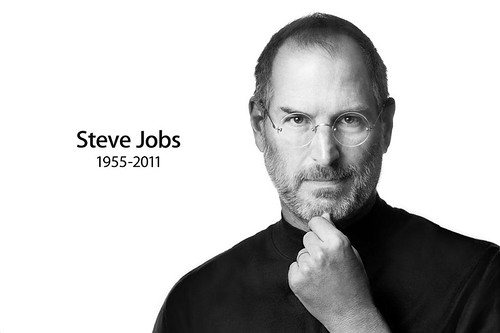The App Store created a new industry overnight.
应用程序商店在一夜之间创造了一个新的产业。
In dorm rooms and garages and at major media companies, entrepreneurs invented new apps.
创业者们在宿舍、车库,以及主流媒体企业开发出了许多新的应用程序。
John Doerr's venture capital firm created an iFund of $200 million to offer equity financing for the best ideas.
约翰·多尔的风投公司成立了iFund基金,提供2亿美元为最好的创意进行股权融资。
Magazines and newspapers that had been giving away their content for free saw one last chance
杂志和报纸看到了最后的希望,他们此前一直免费发布电子内容,
to put the genie of that dubious business model back into the bottle.
也许能凭借应用程序对电子内容进行收费,就像将精灵收回了魔瓶一样。
Innovative publishers created new magazines, books, and learning materials just for the iPad.
富于创新的出版商专门为iPad创造出新的杂志、书刊和学习材料。
For example, the high-end publishing house Callaway, which had produced books ranging from Madonna's Sex to Miss Spider's Tea Party,
例如,曾出版过麦当娜的《性》以及《蜘蛛小姐的茶会》等作品的高端出版社卡拉威
decided to "burn the boats" and give up print altogether to focus on publishing books as interactive apps.
决定破釜沉舟,完全放弃印刷业,而专注于利用交互式应用程序进行书籍出版。
By June 2011 Apple had paid out $2.5 billion to app developers.
截至2011年6月,苹果公司已向应用程序开发者支付了25亿美元。

The iPad and other app-based digital devices heralded a fundamental shift in the digital world.
iPad和其他基于应用程序的数码产品预示着数码世界的根本性转变。
Back in the 1980s, going online usually meant dialing into a service like AOL, CompuServe, or Prodigy that charged fees for access to a carefully curated walled garden
20世纪80年代,上网通常需要拨号进入一个服务商网络,如美国在线、CompuServe公司或Prodigy公司,这些服务商会提供一个围墙网络“花园”,
filled with content plus some exit gates that allowed braver users access to the Internet at large.
里面都是服务商精心挑选组织的内容,同时这些“花园”会有一些出口,更为大胆的用户可以通过这些出口访问整个网络。
The second phase, beginning in the early 1990s,
第二阶段始于20世纪90年代初,
was the advent of browsers that allowed everyone to freely surf the Internet using the hypertext transfer protocols of the World Wide Web,
浏览器开始兴起,所有人都能利用万维网超文本传输协议,通过浏览器浏览互联网上的数十亿个网站。
which linked billions of sites. Search engines arose so that people could easily find the websites they wanted.
雅虎和谷歌等捜索引擎的崛起,使用户可以轻易地找到自己想要的网站。
The release of the iPad portended a new model. Apps resembled the walled gardens of old.
而iPad的发布预示着一种新的模式。应用程序就像老式的围墙花园。
The creators could charge fees and offer more functions to the users who downloaded them.
创作者能够为下载它们的用户提供更多功能。
But the rise of apps also meant that the openness and linked nature of the web were sacrificed.
但是应用程序的兴起也意味着牺牲网络的开放性和连接性。
Apps were not as easily linked or searchable.
应用程序之间不易建立连接,也不易搜索。
Because the iPad allowed the use of both apps and web browsing, it was not at war with the web model.
由于iPad可以同时使用应用程序和网络浏览,因此它同网络模式并无竞争。
But it did offer an alternative, for both the consumers and the creators of content.
但是,它确实为内容创造者和消费者提供了一种替代方案。



